What if The Punisher comics were much darker, more gruesomely violent, and aimed at a mature audience? That’s the premise of The Punisher MAX, Garth Ennis’ grim reimagining of Frank Castle’s war on crime.
If Garth Ennis’ previous work with the character had drawn on his flair for iconoclastic comedy, the MAX series came from a very different place, namely from his passion for intense war stories. Ennis’ work has often included depictions of war, ranging from heartfelt episodes in Preacher to amusing vignettes in Hitman. He has written war as cyberpunk sci-fi in Bloody Mary and as an all-out slapstick spoof in Adventures in the Rifle Brigade. In 2001, however, Ennis blew everyone away when he began a lengthy set of powerful, well-researched, highly realistic, and morally complex war comics.
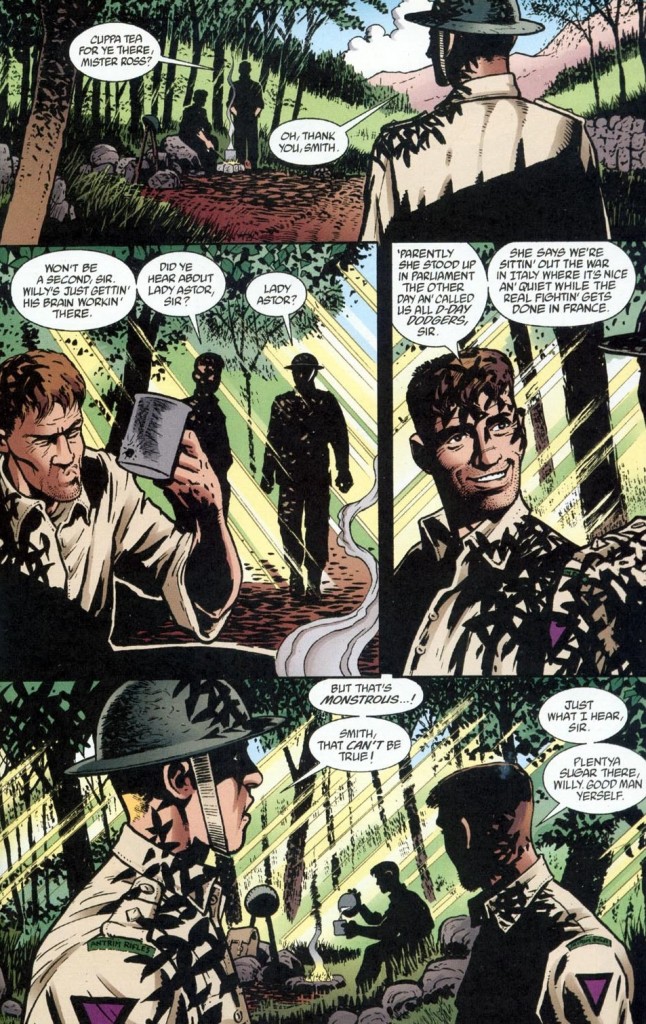 War Story: D-Day Dodgers
War Story: D-Day Dodgers
After honing his skills by updating DC’s German pilot Enemy Ace in the excellent War in Heaven, Ennis wrote a series of unconnected one-shots for Vertigo covering various aspects of World War II. These are works of unbelievably detailed military fiction as well as thought-provoking tales that avoid easy answers – instead of enthusiastically celebrating or condemning war, Garth Ennis preferred to examine at close range the diverse ways in which participants engaged with the conflict. Indeed, these aren’t just good comics, but some of the best WWII storytelling out there, in any media – they match and even top the feel of great movies like Twelve O’Clock High and The Big Red One. I particularly like the tank odyssey ‘Johann’s Tiger’ and the Spanish Civil War-set ‘Condors,’ which humanize the German soldiers while adding further insight into this seminal historical era.
Ennis would go on to write a plethora of varied war tales, including the political revenge fantasy 303 and the horror short movie Stitched, among many others. He launched another series of WWII stories, Battlefields, starting with the brilliant ‘The Night Witches’ and ‘Dear Billy,’ which put more emphasis on the female war experience (the same goes for his latest war comic, the brutal ‘The Last German Winter’). That said, you can tell that the further Ennis got into the mindset of this era, the more jingoistic and simplistic his writing became. This tendency was already evident in 2007, in his Dan Dare mini-series, albeit somewhat disguised by the science fiction setting – and it has plagued much of his subsequent work. The sequels to ‘Night Witches’ were a perfect example of taking an initially multifaceted, fascinating character and gradually turning her into a one-note heroine that seemed like little more than Ennis’ mouthpiece. Still, as inconsistent as his output has been of late, Garth Ennis remains one of the most interesting voices in the field of war comics!
And it was precisely a war comic that kicked off Ennis’ reinvention of the Frank Castle saga, namely the 2003 MAX mini-series Born:

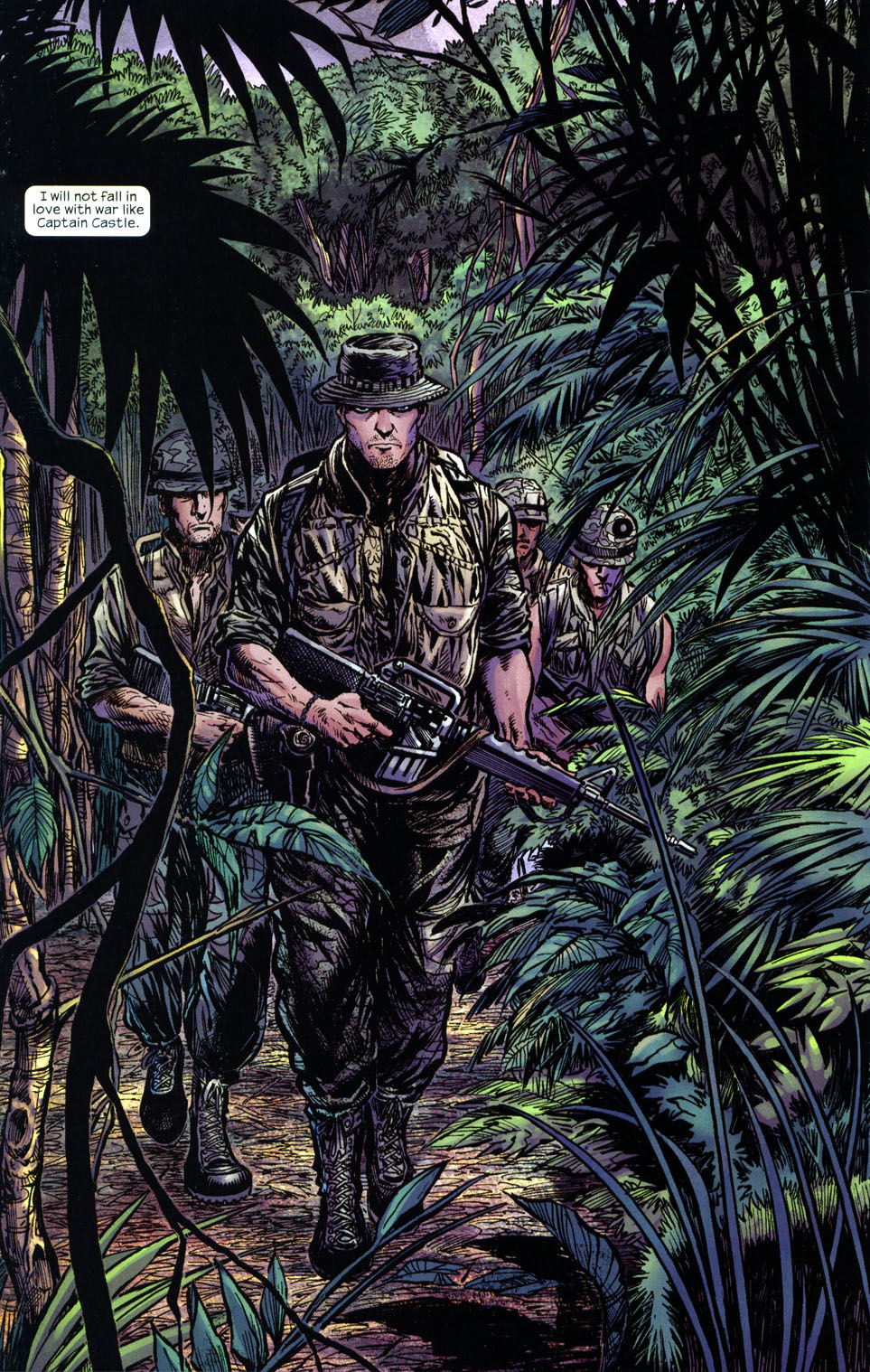 Born #1
Born #1
With art by the amazing team of Darick Robertson, Tom Palmer, and Paul Mounts, Born looked at Frank Castle’s past in the Vietnam War, when he was stationed at Firebase Valley Forge, a remote strategic outpost on the South Vietnamese-Cambodian border. Ennis showed that Frank was already a self-righteous, cold-hearted killer even before the murder of his family sent him on a bloody crusade against crime. In fact, the comic went as far as to suggest that Frank was so addicted to war that he made a deal with some kind of dark entity in order to have a pretext to continue fighting forever – in other words, his fixation on violence may have actually been behind the tragedy that befell his wife and children:
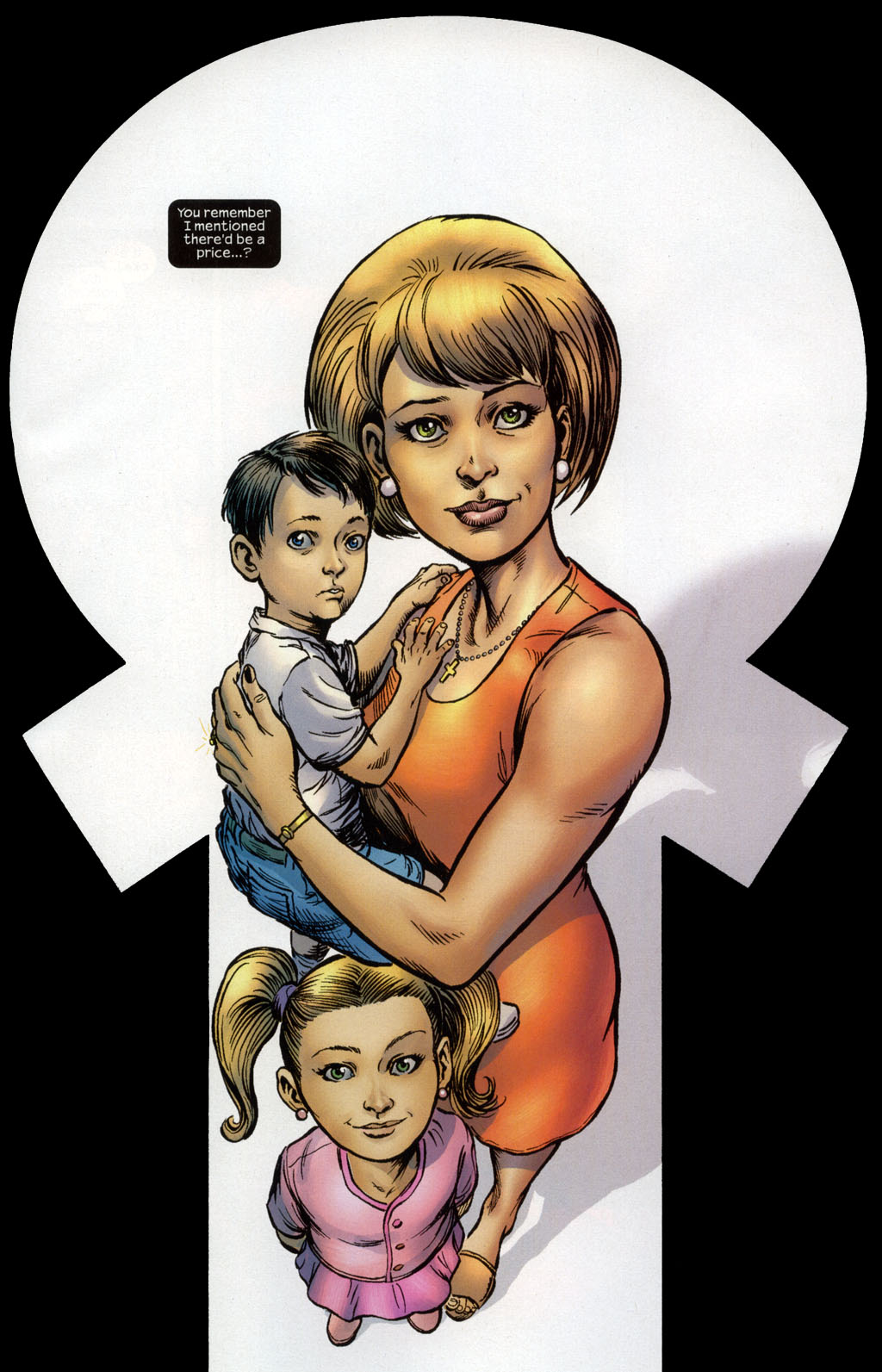 Born #4
Born #4
Despite this supernatural twist, the following The Punisher MAX ongoing series stayed firmly grounded in reality. The tone was reinforced through realistic art (by multiple artists) and ultra-somber colors, not to mention Tim Bradstreet’s photo-like covers:
This is not to say, of course, that the series was entirely realistic… After all, like every Punisher comic, it rested on generous suspension of disbelief. For one thing, readers were asked to assume that Frank’s killing spree never had any unintentional collateral damage (nor was there any moral ambiguity regarding his hundreds of victims).
What’s more, the fact that most of the action and violence was relatively believable only made it more exciting when, every once in a while, Ennis decided to push the limits of the human body:
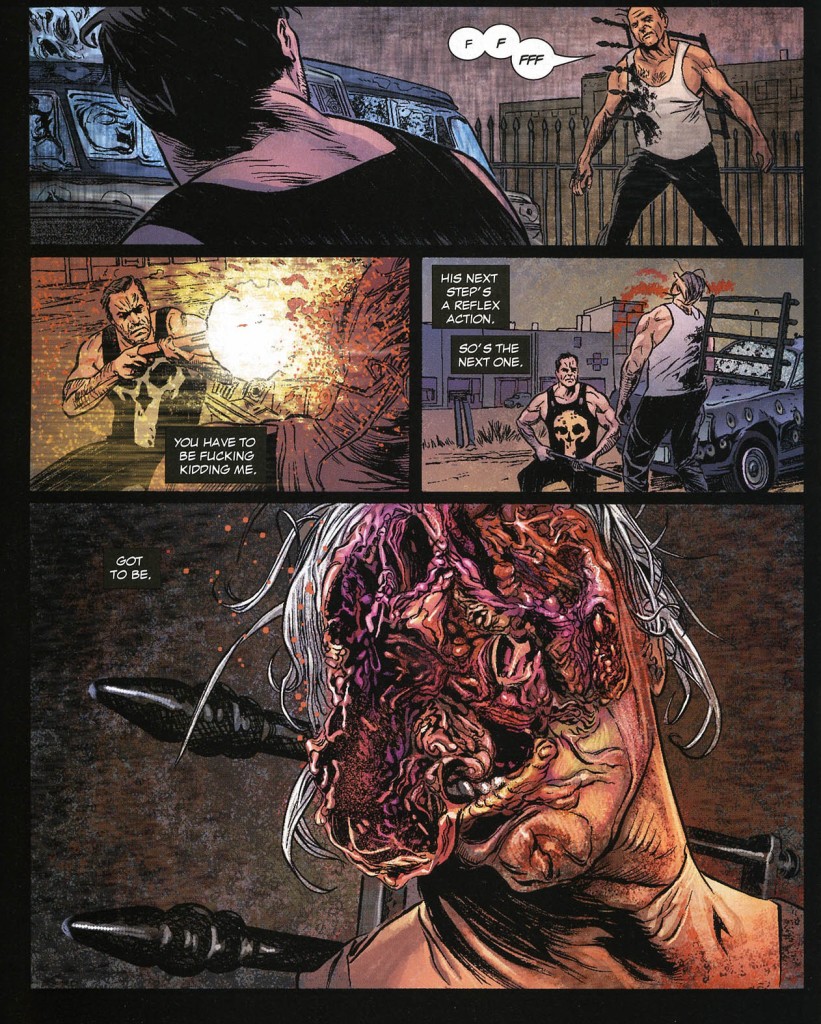 The Punisher MAX #6
The Punisher MAX #6
Besides the hardcore carnage, Ennis also used the freedom of the R-rated Marvel MAX imprint in terms of dialogue. Ennis’ books are usually quite talky, with characters explaining things to one another in minute detail and insulting each other at length, but this has to be one of the most foulmouthed comics ever published, as page after page is filled with every single taboo word in the English language, almost to the point of self-parody.
The endless swearing fits in with the series’ exploitative and aggressively masculine attitude. Yet, at its best, The Punisher MAX often managed to rise above dumb tropes and tell smart, provoking stories. For example, after stumbling a bit in the initial couple of arcs, Garth Ennis delivered his first home run with ‘Mother Russia,’ in which Frank is sent to retrieve a biological weapon from a Russian missile silo and almost ends up starting a nuclear war.
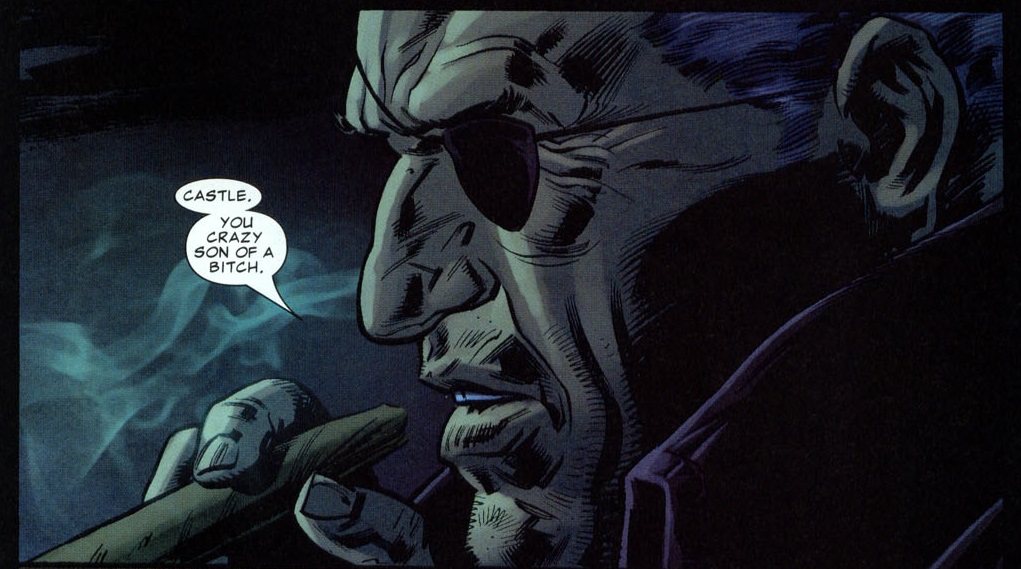 The Punisher MAX #18
The Punisher MAX #18
On top of being a relentless thriller, with the usual mix of adrenaline and testosterone, ‘Mother Russia’ gave Ennis a chance to explore some of the paradoxes of post-Cold War politics, particularly through the character of Nikolai Alexandrovich Zakharov, a Soviet-style general who felt like a man out of his time.
Zakharov returned in ‘Man of Stone,’ which, as Afghanistan-set action stories go, beats the shit out of Rambo III. Not only that, it also happens to have more poignant political insight than anything in that movie, including the priceless scene where an old man explains to an impressed Sylvester Stallone why Americans should give support to the Mujahedeen, as that will never come back to bite them in the ass in any way whatsoever (seen now, this scene seems kookier than anything in the spoof Hot Shots! Part Deux).
To be sure, the Tony Soprano-looking General Zakharov is only one of several larger-than-life villains in the comic. Ennis excelled at writing truly loathsome characters, with each story arc earning the inevitable moment when the Punisher delivered the cathartic kill shot. ‘The Slavers’ did this by drawing on real world problems in a stomach-churning tale about a vicious Eastern European human trafficking ring. With a more tongue-in-cheek vibe, ‘Barracuda’ saw Frank fighting a dude with the words ‘Fuck You’ written on his golden teeth (that’s right, Grant Morrison and Alan Moore aren’t the only comic influences on Nic Pizzolatto’s mind when he’s writing True Detective!).
Among the extensive cast, Garth Ennis also brought back familiar faces from other comics. This included Frank’s former crime-fighting partner Microchip as well as a couple of characters Ennis had first introduced in his previous Punisher series, at the Marvel Knights imprint – SAS officer Yorkie Mitchell (from the Punisher-in-Belfast issue ‘Downtown’) and social worker Jen Cooke (from the twisted arc ‘Hidden’). That said, The Punisher MAX was certainly not set in the regular Marvel Universe, but in a non-superpowered world much like our own. So these are MAX versions of those characters, just like Frank Castle is another version of the guy fighting Daredevil in official continuity, and just like the Nick Fury who shows up is clearly the version Ennis reimagined in his 2001 Fury MAX mini-series…
 The Punisher MAX #13
The Punisher MAX #13
Then again, there is a case to be made that many of Garth Ennis’ comics are connected anyway, even across different publishers… The Fury MAX mini alludes to Preacher’s Arseface. Ennis’ war comic ‘The Firefly and His Majesty’ (published by Dynamite) briefly mentions the protagonist of ‘Johann’s Tiger’ (published by Vertigo). And former CIA agent Kathryn O’Brien, who plays an important role throughout The Punisher MAX, is implied to be Kathryn McAllister, one of the love interests of Tommy Monaghan in Hitman…
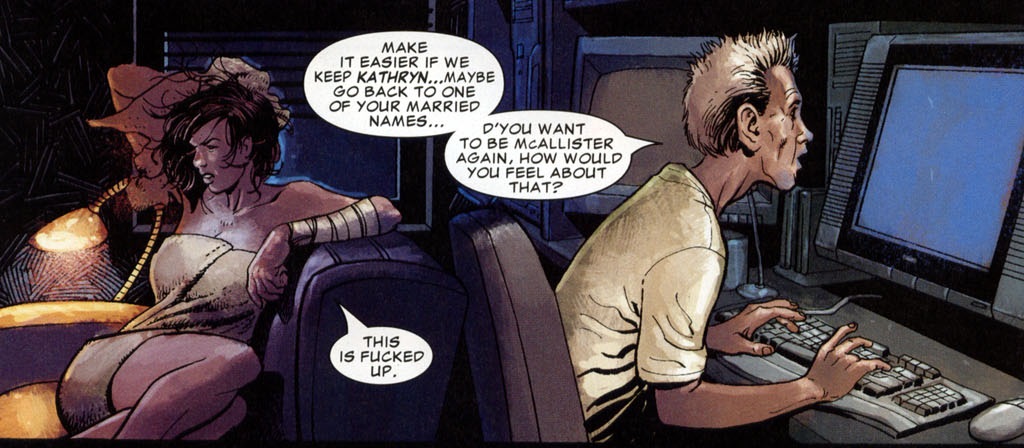 The Punisher MAX #21
The Punisher MAX #21
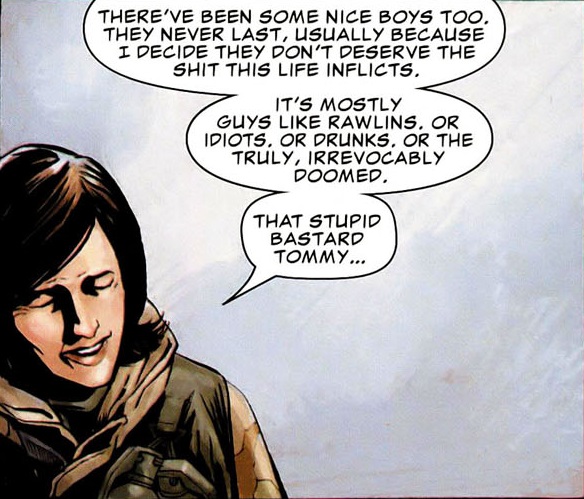 The Punisher MAX #40
The Punisher MAX #40
As for the protagonist, Ennis wrote a mean Punisher who was basically an obsessed, unstoppable force, killing and torturing whoever he felt deserved it without giving it a second’s thought. Unlike the tormented Adrian Chase, Frank Castle just carried out his mission with amoral determination and without a hint of regret.
The interesting thing is that, even though readers were asked to root for the Punisher in every single story, the way the series was set up as a whole actually invited them to question his mission. After all, as each arc spread into the next, it became increasingly clear that all the plots were tightly connected and that even though the Punisher used terminal force, his actions always had consequences – for every gangster he killed, there was a sibling or a widow out for revenge. Not only was Frank’s crusade not able to put an end to the wider evil or to structural problems, his violent methods kept breeding further retaliation and mayhem.
Frank Castle became a metaphor for war itself, a point that was powerfully made in Ennis’ superb final story, ‘Valley Forge, Valley Forge.’ Frank was the darkness spat out by Vietnam, the embodiment of the excesses of the war on drugs, his mission as stubborn and endless as the war on terror.

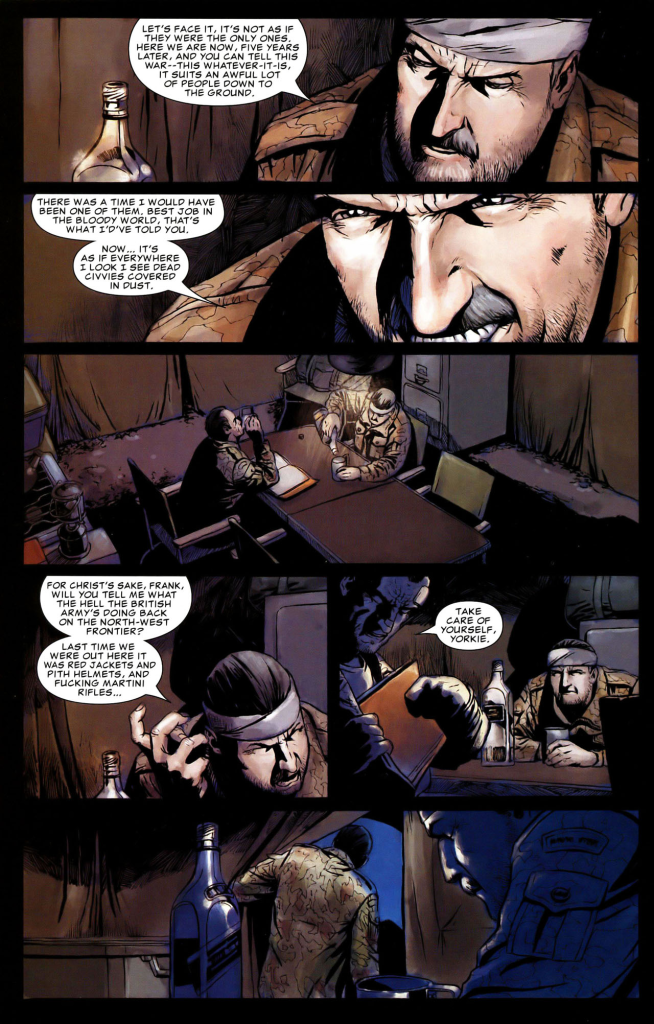 The Punisher MAX #42
The Punisher MAX #42
Besides writing sixty issues of The Punisher MAX, Garth Ennis also wrote a few specials, such as The Cell (a badass prison tale, with art by Lewis LaRosa), The Tyger (a moving exploration of Frank’s pre-Vietnam youth, with art by John Severin), and the spin-off The Punisher presents: Barracuda (which mistakes being outrageous with being funny, thus wasting the skills of talented artist Goran Parlov).
Ennis wasn’t the only one doing specials, though – in fact, there were plenty of one-shots, of varying quality. Duane Swierczynski’s Force of Nature and Rob Williams’ Get Castle stood out as particularly entertaining. 2012 then saw the launch of a short anthology of Untold Tales of Punisher MAX, but it was mostly forgettable (although I quite like the punchline in ‘Jimmy’s Collision’).
The best, as usual, were the holiday specials (written by Andy Diggle, Stuart Moore, and Jason Aaron), which revived the old tradition of dressing up the Punisher in a Santa Claus outfit:
After Garth Ennis left, the series went on for another 15 issues, with rotating teams, but it never recaptured the heights of the Ennis run. However, somebody eventually had the idea of relaunching the series with Jason Aaron on writing duties, which was a stroke of genius. After all, in The Other Side Jason Aaron had already proven that he could get into the head of a Vietnam soldier and with Scalped he had proven that he could write intelligent crime comics better than almost anyone else. And damn it if Aaron didn’t turn out to be sick enough to out-Ennis the hell out of the Punisher:
To sweeten the deal even more, Steve Dillon came in as artist. Dillon, apart from having been a longtime collaborator of Garth Ennis, was no stranger to the Punisher. And crucially, even though his style was cartoonier than that of his predecessors, Dillon did not shy away from disturbingly graphic violence:

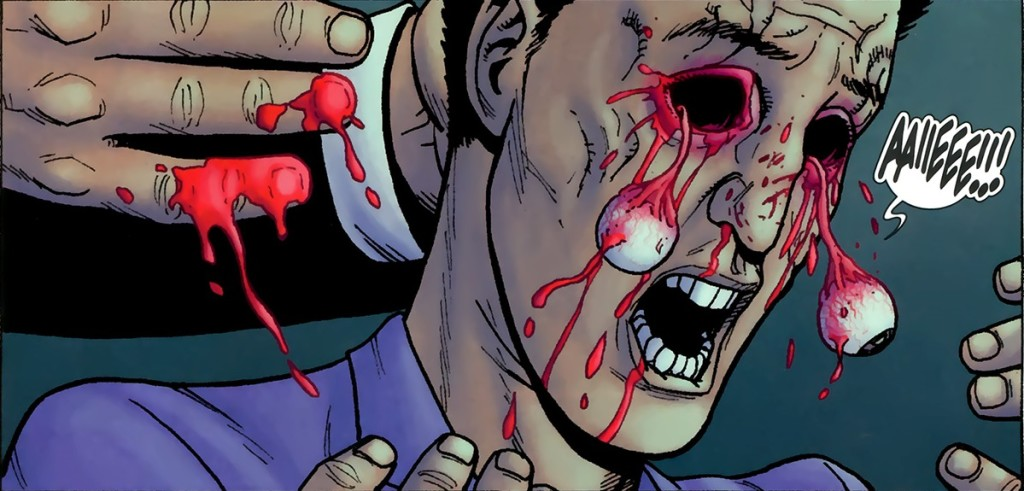 Punisher MAX (v2) #1
Punisher MAX (v2) #1
The high concept of the Jason Aaron/Steve Dillon run was that, if this was a fucked up universe with brutal versions of Marvel characters like Frank Castle and Nick Fury, then why stop there? So the comic also introduced seriously fucked up takes on the Kingpin (and his wife Vanessa), Bullseye, and Elektra.
Jason Aaron didn’t merely reinvent old toys, though. He added eccentric new creations into the mix, including a Mennonite hitman:
 Punisher MAX (v2) #4
Punisher MAX (v2) #4
The series also had a true sense of momentum, with Frank Castle’s ageing body increasingly reaching its limits and everyone closing in on the Punisher after he finally took the fatal step of going after a dirty cop.
In the end, Jason Aaron got to write the ultimate Punisher story and Steve Dillon got to draw it. And while those final issues are the ones that close the lid on The Punisher MAX, the true culmination of the reexamination of Frank Castle’s saga that began in Born took place halfway through, when Frank found himself falling apart psychologically. In a cruel yet logical twist, he recalled how his idealized family life had actually been a complicated adaptation process – like many other vets, Frank had felt more at home as a soldier in the killing fields of Vietnam than as a husband and father leading a suburban life:

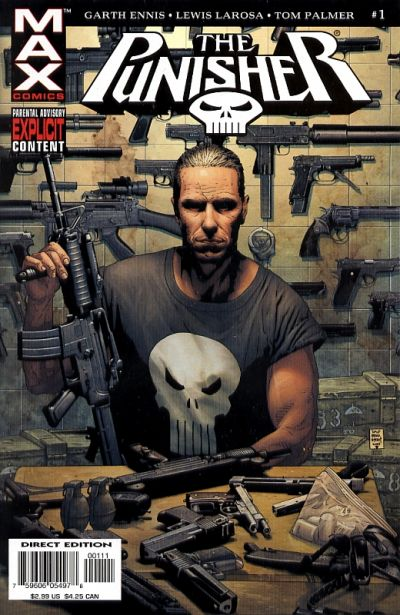
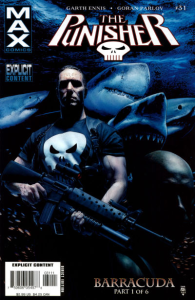
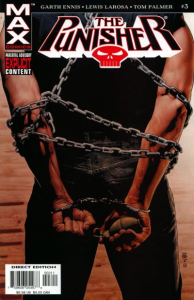
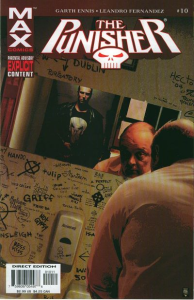
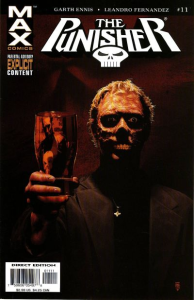
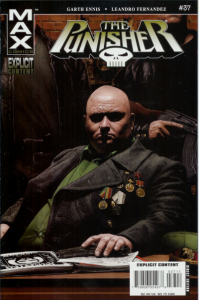
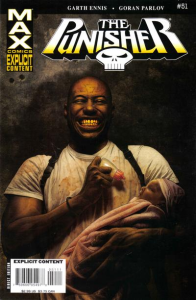
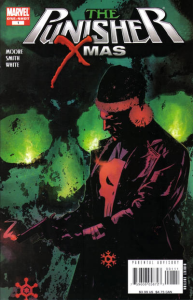
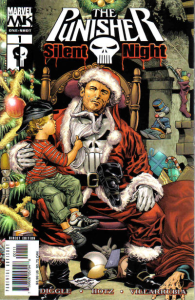
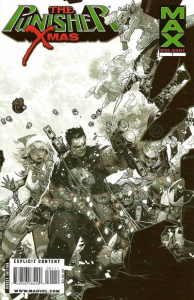
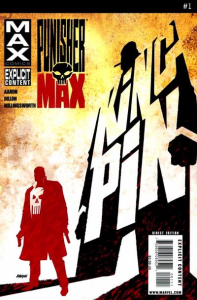
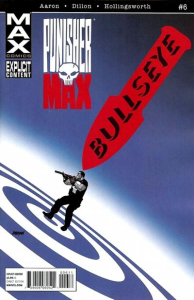
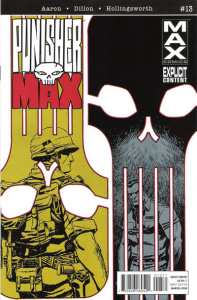
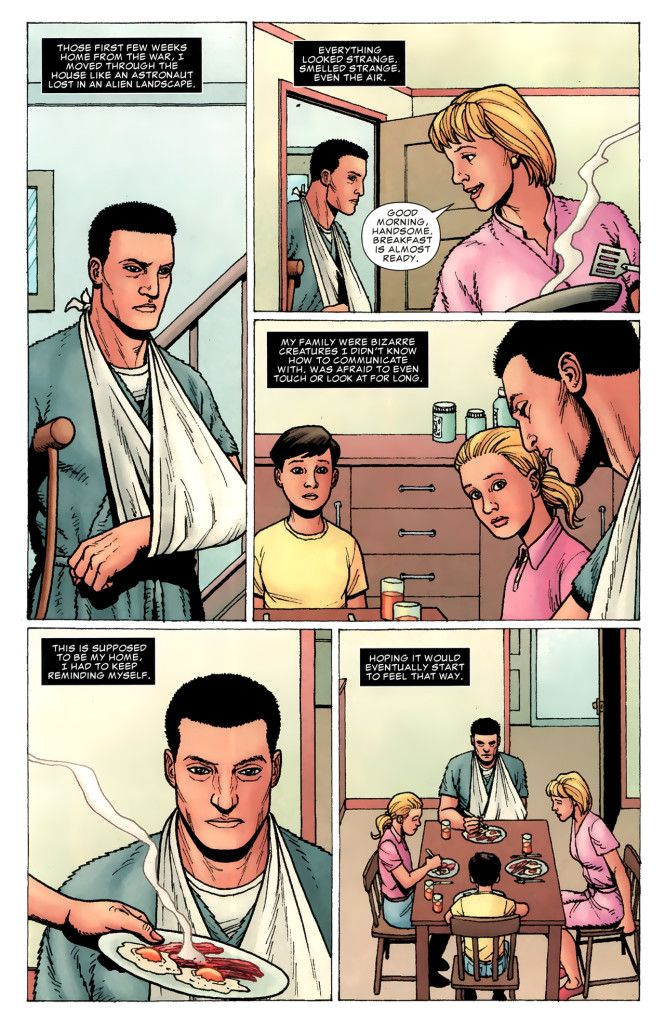
Hmmm… still doubtful about these Max/Black Label/Xtreme/waddever-ya-wanna-call’em imprints: seems to be torture/gore porn. My critical jury is still out on this.
Case in point: the only US work I’ve thoroughly enjoyed from Ennis is Hitman, working in “mainstream” comix seemingly with an editor who could say no to/rein in his excesses.
Ditto Frank Miller: most of his best work was done within or pushing the limits of the Comics Code or exploring an ‘Elseworlds version’ of such (yes, DKR) before Elseworlds was heard of.
Discuss: Give the likes of Miller free reign and arguably the work sees a steady decline after Sin City onwards?
It works both ways: some creators provide relatively bland work-for-hire in the mainstream yet are wonderful when unleashed (Matt Fraction immediately comes to mind), others use that freedom to indulge in their worst ticks. I agree that Ennis’ strongest work tends to be done under greater editorial oversight and content restrictions which he has to somehow work around (although Vertigo’s War Stories are proof that these ‘mature reader’ labels can indeed be used to publish solid ‘mature’ comics). Miller is more of a lost cause: from I what I’ve seen, his storytelling has generally evolved into a grotesque parody of his earlier work, regardless of where he publishes.